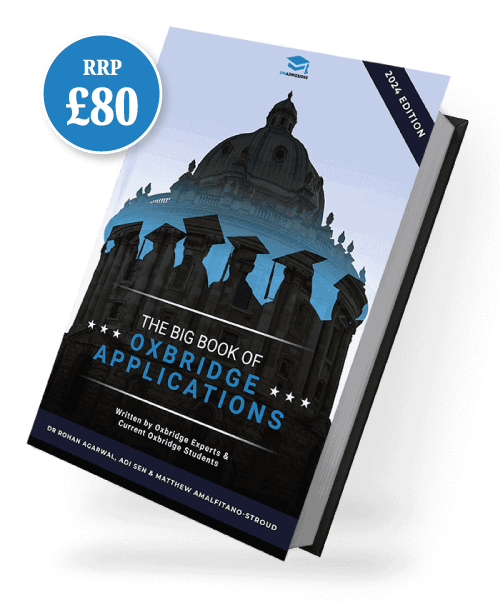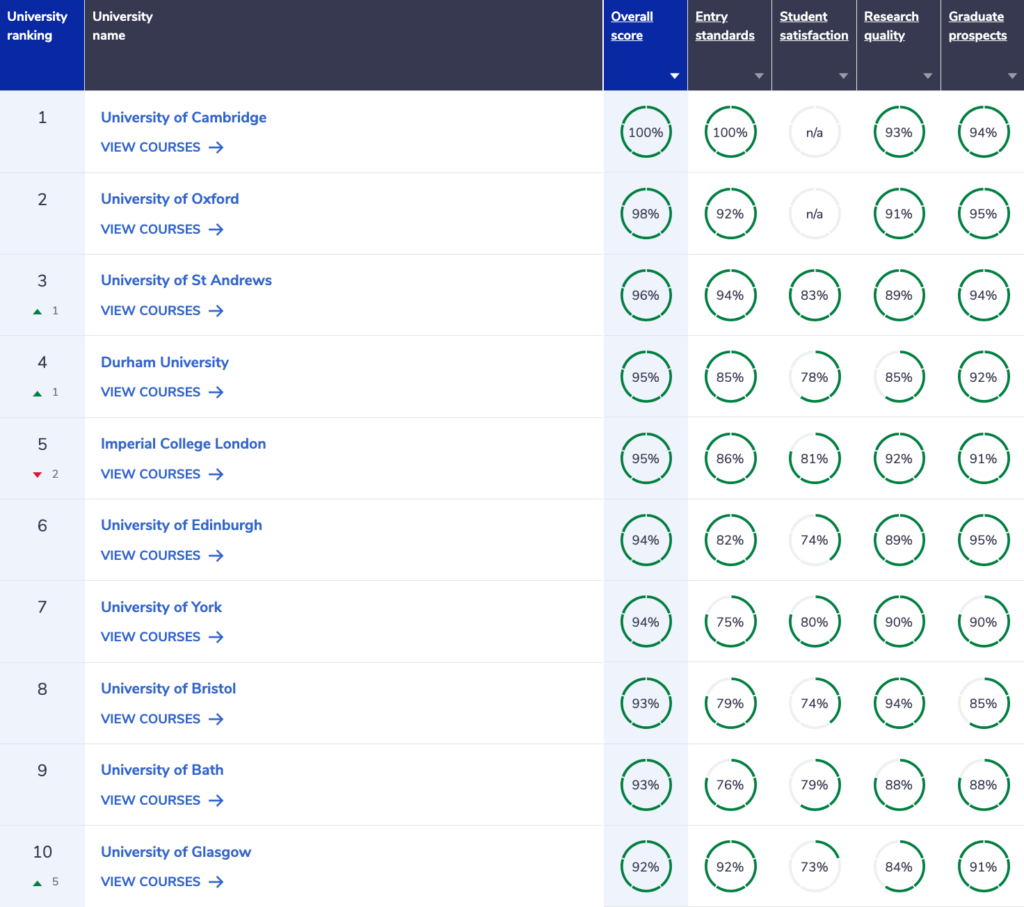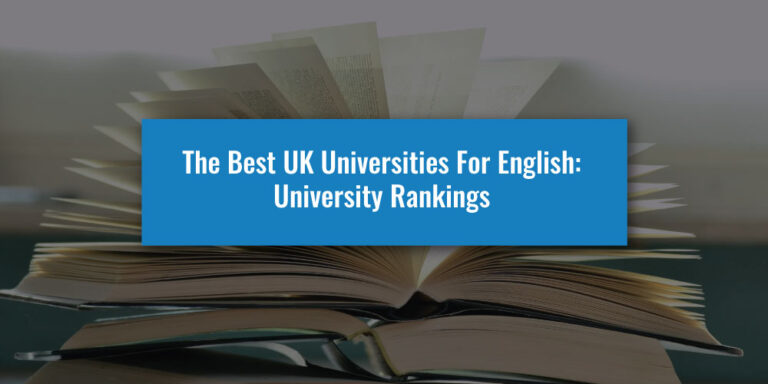Chemistry is one of the three core sciences, so it’s no surprise that it’s a popular course to study in the UK.
Each year, thousands of applicants apply to study the subject at over 50 different universities that offer the course. These universities are ranked each year by a selection of university ranking tables, so we’re going to explore these rankings in this guide to understand which Chemistry courses are the best in the UK.
Who Makes The Chemistry University rankings?
You might be wondering how multiple ranking tables can exist if they are meant to provide an objective ranking. In reality, these rankings are far from objective and can differ based on how each organization interprets the data and assigns scores to universities. While the data used is sourced from similar places, it’s the way the data is applied that leads to varying rankings between organisations.
We’ll consider how reliable these tables actually are later, but let’s first take a look at the complete ranking tables for Physics, as well as how each organisation presents their data.
Want to get your offer to study Chemistry at Oxford?
Hoping to study Chemistry at Oxford? You’ll need to write the perfect Personal Statement and interview like a pro to get your dream Oxford Chemistry offer.
Discover our Full-Blue Chemistry Programme for comprehensive admissions support by clicking the button below to enrol and triple your chances of success.
The Guardian Chemistry Rankings
To create their university rankings rankings (including Chemsitry), The Guardian uses the following metrics:
Guardian score/100 – rating of excellence based on a combination of the other factors.
Satisfied with the course – the rating of the overall quality of the course, given by final-year students in the latest National Students Survey (NSS) given as a percentage.
Satisfied with the teaching – the rating of the quality of teaching on the course given by final-year students in the latest NSS.
Satisfied with feedback – the rating of the feedback and assessment, given by final-year students in the latest NSS.
Student to staff ratio – number of students per member of teaching staff.
Spend-per student/10 – money spent on each student, excluding academic staff costs, given as a rating out of ten.
Average entry tariff – typical UCAS scores of young entrants to the department.
Value-added score/10 – this score compares students’ degree results with their entry qualifications, to show how effectively they are taught – given as a score out of ten.
Career after 15 months – percentage of graduates who find graduate-level jobs, or are in further study at professional or higher education level, within 15 months of graduation.
Continuation – percentage of first-year students continuing to second-year.
This data is collected from various sources, including the National Student Survey (NSS) for student satisfaction rates and the universities themselves, which provide details on admissions, spending, and more. Because the information comes from external sources, The Guardian’s rankings are free from any bias in terms of the data used.
The Guardian Chemistry University Rankings 2025
Let’s take a look at The Guardian’s full league table for Chemistry degrees, including the results for 2025 and 2024 compared:
| Position | University | Previous Position (2024) |
|---|---|---|
| 1 | University of St Andrews | 1 (=) |
| 2 | University of Oxford | 3 (>1) |
| 3 | University of Cambridge | 2 (<1) |
| 4 | University of Strathclyde | 7 (>3) |
| 5 | Aston University | 14 (>9) |
| 6 | Loughborough University | 8 (>2) |
| 7 | University of Lincoln | 6 (<1) |
| 8 | Durham University | 11 (>3) |
| 9 | University of Leicester | 21 (>12) |
| 10 | Lancaster University | 9 (<1) |
| 11 | Imperial College London | 10 (<1) |
| 12 | University of Edinburgh | 5 (<7) |
| 13 | University of Southampton | 4 (<9) |
| 14 | Heriot-Watt University | 35 (>21) |
| 15 | University of York | 12 (<3) |
| 16 (=) | University of Birmingham | 28 (>12) |
| 16 (=) | University of Sussex | 24 (>8) |
| 18 | University of Bath | 19 (>1) |
| 19 | University of Leeds | 22 (>3) |
| 20 | University of Plymouth | 30 (>10) |
| 21 | Queen’s University Belfast | 37 (>16) |
| 22 | University of Bristol | 17 (<5) |
| 23 | University of Aberdeen | 13 (<10) |
| 24 | Manchester Metropolitan University | 27 (>3) |
| 25 | University of Surrey | 20 (<5) |
| 26 | University of Huddersfield | 25 (<1) |
| 27 | University of Kent | 23 (<4) |
| 28 | University of Liverpool | 36 (>8) |
| 29 | University of Reading | 31 (>2) |
| 30 | University of Sheffield | 31 (>1) |
| 31 | Swansea University | 18 (<13) |
| 32 | University of Glasgow | 29 (<3) |
| 33 | Sheffield Hallam University | 33 (=) |
| 34 | University of Warwick | 26 (<8) |
| 35 | University of Greenwich | 41 (>6) |
| 36 | Nottingham Trent University | 47 (>11) |
| 37 | University of East Anglia | 15 (<22) |
| 38 | King’s College London | 49 (>11) |
| 39 | Keele University | 34 (<5) |
| 40 | University of Bradford | 43 (>3) |
| 41 | Kingston University London | 39 (<2) |
| 42 | Newcastle University | 44 (>2) |
| 43 | Liverpool John Morres University | 38 (<5) |
| 44 | Queen Mary University of London | 45 (>1) |
| 45 | University of Manchester | 46 (>1) |
| 46 | University of Nottingham | 42 (<4) |
| 47 | University College London (UCL) | 50 (>3) |
| 48 | Cardiff University | 48 (=) |
| 49 | University of Salford | 40 (<9) |
| 50 | De Montford University | 51 (>1) |
So, what can this table tell us about the Chemistry degrees available in the UK in 2025? Let’s break down some of the key points.
Firstly, looking at the top ten, we can see that just three of the universities are Russell Group Universities (Oxford, Cambridge and Durham). Russell Group universities generally perform very well in university rankings, but Chemistry is apparently not the group’s strongest subject according to The Guardian.
Instead, we that less well-known universities performed well in this list, including Strathclyde, Aston and Loughborough. St Andrews takes the top spot, which isn’t uncommon on ranking tables made by The Guardian.
Instead, we can see that many Russell Group universities performed very poorly, including Queen Mary, Manchester and Cardiff, which was just two spots away from the bottom. Perhaps most surprising is UCL’s placement in 47th. UCL is one of the G5 Universities and is generally well-regarded, including by The Guardian, so its placing so low is unusual (although it remains consistent with 2024’s placement).
We should note that one of the top-ranking universities, Cambridge, does not offer a dedicated undergraduate Chemistry degree. Instead, this table includes the Natural Science degree, which allows students to specialise in physical or biological sciences, with Chemistry as part of the curriculum. It is unclear whether the data for this ranking takes into account only the physics aspect of the degree.
Compared to the 2024 list, we can see that placements were very unstable for a lot of universities, with many rising or falling more than ten places in the table. The biggest gains this year were made by Heriot-Watt, which jumped 21 places from 35 to 14. The University of East Anglia saw the biggest drop, falling from 15th to 37th in the table.
The University of Aberdeen saw a significant fall of 10 places, which is surprising given that The Guardian ranked it as the best medical school in the UK for 2025. Despite the two subjects being somewhat linked, these tables show that universities can see major differences in the performance of their courses.
The Complete University Guide Chemistry Rankings
Overall score – the total score calculated by The Complete University Guide’s independent and trusted methodology.
Entry standards – the average UCAS tariff of new students entering university.
Student satisfaction – a guide to how satisfied students are with the quality of teaching they receive.
Research quality – a measure of the quality of the research undertaken by the university.
Research intensity – a measure of the proportion of staff involved in high-quality research at the university.
Graduate prospects – outcomes – a guide to the success of graduates after leaving university.
Graduate prospects – on track – a measure of whether recent graduates agree that their current activity fits with their future plans.
While the Complete University Guide organises various data points into broader categories, the overall results provide similar insights to The Guardian’s rankings, albeit with fewer metrics. Like The Guardian, data is gathered from the NSS and universities, but the two organisations use different systems for interpreting and scoring the data. This is why the university rankings differ between the two lists.
Complete University Guide Chemistry University Ranking Table 2025
Now, let’s look at the Complete University Guide Chemistry ranking table, including the comparison to 2024’s rankings.
| Position | University | Previous Position (2024) |
|---|---|---|
| 1 | University of Cambridge | 1 (=) |
| 2 | University of Oxford | 2 (=) |
| 3 | University of St Andrews | 4 (>1) |
| 4 | Durham University | 5 (>1) |
| 5 | Imperial College London | 3 (<2) |
| 6 | University of Edinburgh | 6 (=) |
| 7 | University of York | 7 (=) |
| 8 | University of Bristol | 8 (=) |
| 9 | University of Bath | 9 (=) |
| 10 | University of Glasgow | 15 (>5) |
| 11 | University of Strathclyde | 12 (>1) |
| 12 | University College London (UCL) | 17 (>5) |
| 13 | Swansea University | 19 (>6) |
| 14 | University of Birmingham | 11 (<3) |
| 15 | University of Manchester | 14 (<1) |
| 16 | University of Southampton | 10 (<6) |
| 17 | Queen’s University Belfast | 26 (>9) |
| 18 | University of Liverpool | 27 (>9) |
| 19 | University of Warwick | 13 (<6) |
| 20 | University of Nottingham | 22 (>2) |
| 21 | University of East Anglia | 23 (>2) |
| 22 | Loughborough University | 18 (<2) |
| 23 | University of Leeds | 24 (>1) |
| 24 | Newcastle University | 20 (<4) |
| 25 | University of Sheffield | 21 (<4) |
| 26 | Keele University | 25 (<1) |
| 27 | University of Surrey | 16 (<11) |
| 28 | Cardiff University | 32 (>4) |
| 29 | Northumbria University | 31 (>2) |
| 30 | University of Sussex | 28 (<2) |
| 31 | King’s College London | 30 (<1) |
| 32 | University of Lincoln | 29 (<3) |
| 33 | Aston University | 33 (=) |
| 34 | University of Plymouth | 37 (>3) |
| 35 | University of Leicester | 42 (>7) |
| 36 | Queen Mary University of London | 34 (<2) |
| 37 | Lancaster University | 29 (<8) |
| 38 | Manchester Metropolitan University | 46 (>8) |
| 39 | Heriot-Watt University | 41 (>2) |
| 40 | University of Kent | 43 (>3) |
| 41 | University of Reading | 40 (<1) |
| 42 | Nottingham Trent University | 50 (>8) |
| 43 | Sheffield Hallam University | 48 (>5) |
| 44 | University of Aberdeen | 36 (<8) |
| 45 | University of Salford | 44 (<1) |
| 46 | University of Central Lancashire | 45 (<1) |
| 47 | University of Huddersfield | 49 (<2) |
| 48 | University of Bradford | 52 (>4) |
| 49 | University of South Wales | 39 (<10) |
| 50 | University of Greenwich | 47 (<3) |
| 51 | Kingston University London | 55 (>4) |
| 52 | De Montford University | 54 (>2) |
Compared to The Guardian’s table, this ranking table saw far fewer shake-ups in placements, with far more universities holding their spots from 2024. The top ten features far more representation of the Russell Group, with two out of the ten entries not being members. St Andrews appears in 4th on this list, while Bath takes the 9th spot (it achieved 18th on The Guardian’s list).
As expected, Oxbridge took the top spot on the list, although Cambridge’s inclusion does raise questions about what counts as a Chemistry course. However, Imperial, Edinburgh, York, Bristol and Glasgow all performed better than they did on The Guardian’s table.
UCL, Manchester and Cardiff also all did much better on this list, placing 12th, 15th and 28th respectively. This goes to show that Complete University Guide views Russell Group universities far more favourably than The Guardian for Chemistry, with the lowest-ranked member being Queen Mary at 36.
As for major placement changes, the biggest example is the University of Surrey, dropping 11 places from 16th to 27th. The University of South Wales suffered a drop of ten places, but no university increased their placement by 10 or more (Belfast and Liverpool each went up nine places).
Access "The Big Book Of Oxbridge Applications" For FREE
Oxford offers a fantastic Physics degree, while Cambridge offers Physics within its Natural Science degree. Learn more about these two degrees in The Big Book Of Oxbridge Applications, which you can download for free here. Through over 350 pages, you’ll find:
- Over 40 admissions test practice questions
- 28 example Oxbridge Personal Statements
- Interviews with Oxbridge students and graduates
- Additional downloadable resources
Fill in your details below to claim your digital copy today!

The Best and Worst UK Universities For Chemistry
Now that we’ve seen the full tables, let’s hone in on the tops and bottoms of each list. While it’s easy to label these universities as the “best” and “worst”, it’s important to consider that these rankings are only one measurement of a university’s quality. Take these assessments with a grain of salt, as you may find these universities appeal to you more or less than the rankings would suggest.
Best Universities For Chemistry UK
First, let’s look at the top five universities on each list. By comparing them, we can identify which universities are widely regarded as the best in the UK for Chemistry:
Complete University Guide
- University of Cambridge
- University of Oxford
- University of St. Andrews
- Durham University
- Imperial College London
The Guardian
- University of St Andrews
- University of Oxford
- University of Cambridge
- University of Strathclyde
- Aston University
While three of the universities are shared between lists, each table actually had very different opinions on what some of the best UK Chemistry courses were.
Excluding St Andrews, all the other universities in the top five of the Complete University Guide’s table were Russell Group. However, only Oxford and Cambridge feature from the group in The Guardian’s top five. Instead, unusual picks like Strathclyde and Aston earned top spots on this list, along with St Andrews taking the top spot from both Oxbridge universities.
While these aren’t common picks in university rankings, it shows that it isn’t always the most competitive or most popular universities that are considered the best. For example, Aston received higher student satisfaction scores in teaching and feedback than any other university in the top five.

Worst Universities For Chemistry UK
Next, here are the five lowest-ranked universities for Chemistry. While they appear at the bottom of the list, this doesn’t mean they offer “bad” or “the worst” Chemistry degrees; they simply ranked lower compared to others.
Complete University Guide
- De Montford University
- Kingston University London
- University of Greenwich
- University of South Wales
- University of Bradford
The Guardian
- De Montford University
- University of Salford
- Cardiff University
- University College London (UCL)
- University of Nottingham
While Complete University Guide’s bottom five list features much less known universities, The Guardian has actually ranked three Russell Group universities here.
Cardiff, UCL and Nottingham have all placed at the bottom of this list, which is incredibly uncommon. However, we can see that each university still earned decent scores for student satisfaction and career prospects. This goes to show that the standard for UK universities are very high, as well as the fact that university rankings are scored based on a variety of things, including things that may not impact students much.
For example, we can see that Cardiff and UCL both earned a score of 1/10 for “Value added”, which is a way of calculating how effectively students are taught. However, this isn’t a definitive result and may not accurately reflect the quality of the teaching at these universities.
While there’s not too much to say about the bottom five of the Complete University Guide, it’s worth noting that both tables agreed that the lowest-ranked university was De Montford which isn’t too common within university rankings.
Which Ranking Table Should I Follow?
You probably shouldn’t base your decisions solely on ranking tables, so what are they useful for? Ideally, these tables should serve as a starting point for your research. While they aren’t always consistent, both tables generally do a good job of highlighting the most highly regarded universities, making them a good reference if reputation is important to you. However, there are many other factors to consider as well.
For instance, if you’re concerned about how well you might perform in your exams, it’s important to review the entry requirements and acceptance rates for each university to determine which ones you’re most likely to be admitted to.
If you want to apply to a top-ranking university like Oxford and Cambridge, you’ll face a more rigorous application process, higher entry requirements and lower acceptance rates (13.8% at Oxford and 16.6% at Cambridge). It’s crucial to ensure that you’re a competitive candidate for these universities based on your current or predicted grades.
Statistics aren’t the only consideration. Remember, university life is about more than just academics, as most students spend at least three years living on campus full-time. It’s important to make sure you like the campus, facilities, and the surrounding area before making your decision. Attending open days is a great way to get a feel for a university’s atmosphere and facilities, so be sure to visit the ones that interest you the most.
The final point we’d like to highlight is that you shouldn’t dismiss lower-ranking universities right away. While they may not be on par with the top institutions, many still offer a high-quality education, despite some potential drawbacks. If a lower-ranked university interests you, it’s still worth applying, as it could be a great fit and usually comes with less competition. The important thing is to ensure you’ve done thorough research based on the factors that matter most to you.
Conclusion
That concludes our look at Chemistry university degree rankings in the UK. The key takeaway from this guide is that, while these tables are helpful tools, they offer only part of the picture. While data-driven scores may be more important for some, it’s still essential to consider both personal preferences and rankings when choosing a university.
Most importantly, these rankings are neither definitive nor official. Since they can vary considerably, it’s up to you to decide which one you trust and how much importance you place on rankings overall. Ultimately, if you choose a university that makes you happy, the approach you took in making that decision has been a success.
Worried about your Oxford chances? Our offer success rate is 59%
Applying to Oxford Chemistry is immensely competitive and it is crucial that you give yourself the best chance of success. We help you craft the perfect Personal Statement and teach you how to Interview effectively – covering all areas of your Oxford Chemistry application.
Discover our Full-Blue Chemistry Programme now to learn how you can triple your chances of success.









